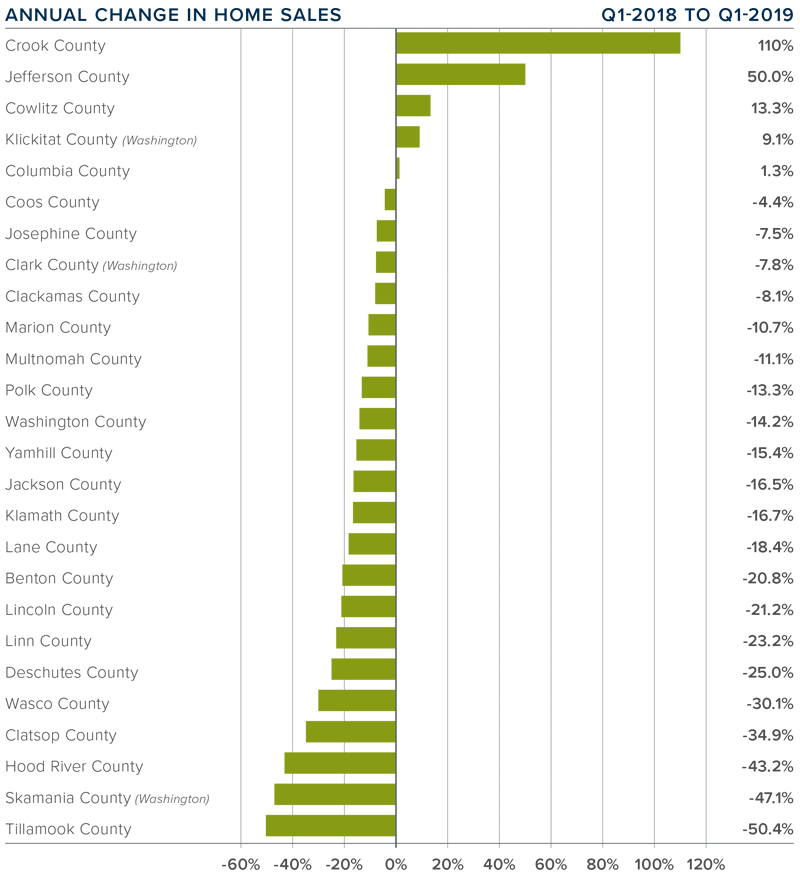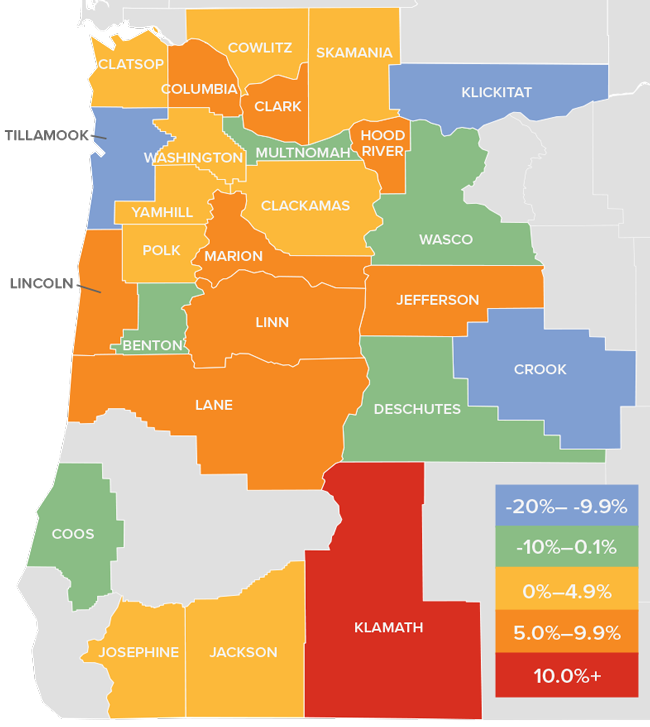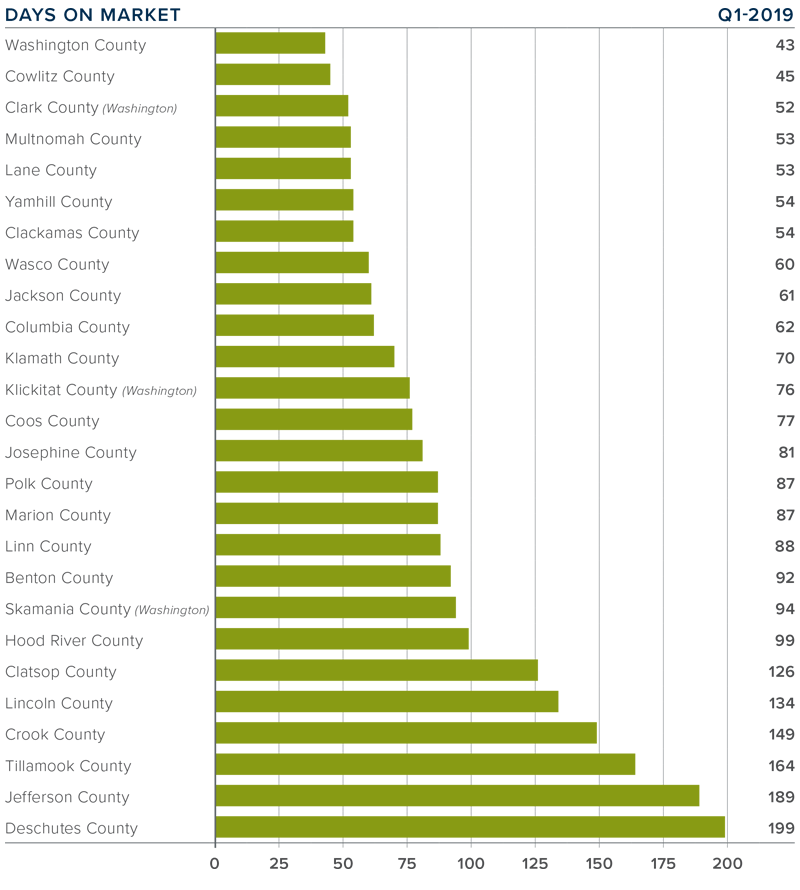The following analysis of the Oregon and Southwest Washington real estate market is provided by Windermere Real Estate Chief Economist Matthew Gardner. We hope that this information may assist you with making better-informed real estate decisions. For further information about the housing market in your area, please don’t hesitate to contact your Windermere agent.
ECONOMIC OVERVIEW
Oregon added 29,500 new jobs over the past 12 months, representing an annual growth rate of 1.5%. The current pace of job growth continues the slowdown that started in mid-2018. I am not overly concerned by this slowdown in growth, as it is typical for this stage in the economic cycle.
The Southwest Washington market (Clark, Cowlitz, Skamania, and Klickitat counties) added 4,490 new jobs over the past 12 months, which represents an annual growth rate of 2.1%.
Oregon’s unemployment rate was 4.4% in February, up from 4.2% a year ago. In Southwest Washington, the unemployment rate was 5.5%, down from 5.9% in February of 2018.
HOME SALES
- First quarter home sales dropped 13.1% compared to the same period last year, with a total of 10,516 transactions.
- Year-over-year sales rose in five counties, remained static in one, but dropped in the other 21 counties contained in this report.
- Sales rose the most in Crook County, which saw a massive 110% increase compared to the first quarter of 2018, though this was an increase of only 11 sales. There were also solid increases in Jefferson and Cowlitz counties. Home sales fell the most in the small Tillamook, Skamania, and Hood River counties.
- Sales in the first quarter were clearly a disappointment, but I don’t believe this is a systemic drop in demand. I am confident the spring will bring more buyers and sales will pick back up in many markets.

HOME PRICES
- The average home price in the region rose 2.2% year-over-year to $369,721, but the market saw a drop of 1.4% compared to the fourth quarter of 2018.
- Eighteen of the counties contained in this report experienced price growth compared to the first quarter of 2018. Eight counties saw price contractions.
- Klamath County led the market with the strongest annual price growth. Homes there sold for 11.1% more than a year ago. Crook, Tillamook, and Klickitat counties experienced the largest drop in home prices, but these are small counties, making them more prone to significant swings.
- The takeaway is that price growth continues to moderate, but I expect it to pick up in the second quarter given the drop in interest rates earlier this year.

DAYS ON MARKET
- The average number of days it took to sell a home in the region dropped 3 days compared to a year ago, but was up by 16 days compared to the final quarter of 2018.
- Twelve counties saw the length of time it took to sell a home drop compared to a year ago. Fourteen counties saw market time rise.
- The average time it took to sell a home last quarter was 90 days.
- Homes again sold the fastest in Washington (43 days) and Cowlitz (45 days) counties.

CONCLUSIONS

The speedometer reflects the state of the region’s real estate market using housing inventory, price gains, home sales, interest rates, and larger economic factors.
I believe listing inventories will continue to rise as we move through the spring months. We will also see more buyers start their search for a new home to take advantage of the drop in interest rates. With all of this in mind, I have moved the needle further toward buyers because they have more choice and price growth has slowed. That said, in aggregate, the market still favors home sellers.
 As Chief Economist for Windermere Real Estate, Matthew Gardner is responsible for analyzing and interpreting economic data and its impact on the real estate market on both a local and national level. Matthew has over 30 years of professional experience both in the U.S. and U.K.
As Chief Economist for Windermere Real Estate, Matthew Gardner is responsible for analyzing and interpreting economic data and its impact on the real estate market on both a local and national level. Matthew has over 30 years of professional experience both in the U.S. and U.K.
In addition to his day-to-day responsibilties, Matthew sits on the Washington State Governors Council of Economic Advisors; chairs and the Board of Trustees at the Washington Center for Real Estate Research at the University of Washington; and is an Advisory Board Member at the Runstad Center for Real Estate Studies at the University of Washington where he also lectures in real estate economics.
 Facebook
Facebook
 X
X
 Pinterest
Pinterest
 Copy Link
Copy Link



